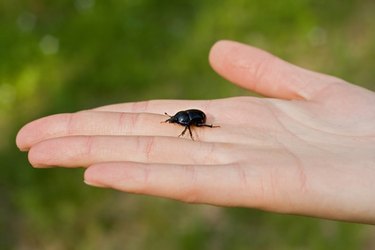
Those little beetles diving in your pool must breathe, so they store air in their abdomens. They can swim for extended periods due to the small amount of air they need while under water. Like many bugs, diving beetles are attracted to light, so you may see them more often at night than during the day. Chances are that one or two beetles will likely fly away before becoming a nuisance, but if not, read on to understand why they are choosing your pool instead of a natural habitat.
Appearance
Video of the Day
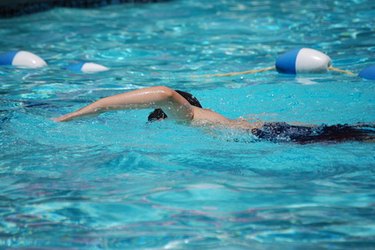
Larvae are long and thin, with six legs and antennae. Adult diving beetles range from 1/4 inch to almost 2 inches long. They appear almost flat and have wings and thin, prominent antennae. Their shiny black, brown and greenish bodies are oval-shaped and smooth. The brownish/black predaceous diving beetle is the most common, and has yellow around the front of the head, wings and sides of the thorax. Diving beetles use their long hind legs like oars to swim.
Video of the Day
Habitat and Prey
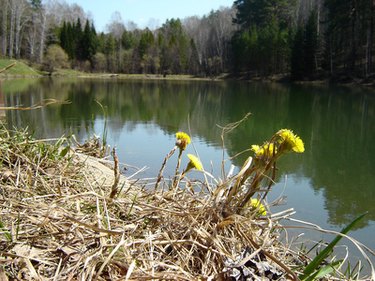
Predaceous diving beetles live in ponds. Like their parents, the larvae eat aquatic insects that are also found in water. Tadpoles, frogs, fish, insects, and snails are common prey. The larvae crawl to the soil on the shore to pupate. Both larvae and adults hibernate in mud in and around ponds.
Lifespan
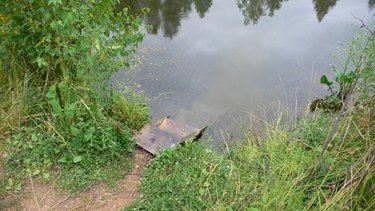
The diving beetle's lifespan is approximately three years. They insert eggs in the stems of underwater plants, and the larvae pupate become adult beetles within one month.
Why They Jump into Your Pool
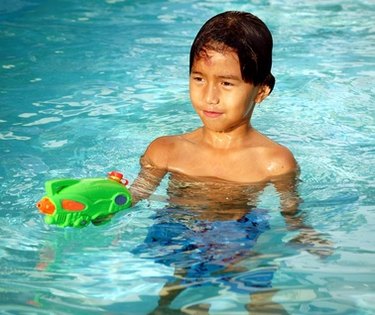
Because they are strong fliers, predaceous diving beetles often migrate to backyard swimming pools. If your pool is murky or susceptible to falling leaves and debris, other insects will be attracted to it, therefore creating a feast for hungry diving beetles.
Prevention and Control
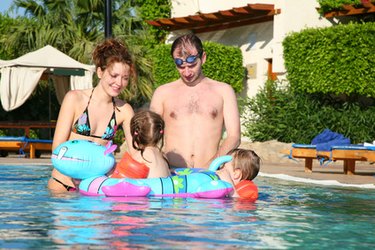
The most effective way to prevent your pool from being invaded by diving beetles is to properly filter the water and keep it clean and treated with chlorine or other chemicals. Do not use insecticides in your swimming pool, as although they will kill the beetles, they also will potentially harm the people who use the pool. Sweep debris and leaves away from poolside and scoop any obvious beetles or bugs out of the water with a net. Fill a bucket with water mixed with a bit of oil. Once the beetles have been removed from the pool, drop them in the bucket. The oil in the water will cause them to drown. If you notice unwanted insects around pool vegetation, consider spraying plants with an insecticide hours before using the pool.